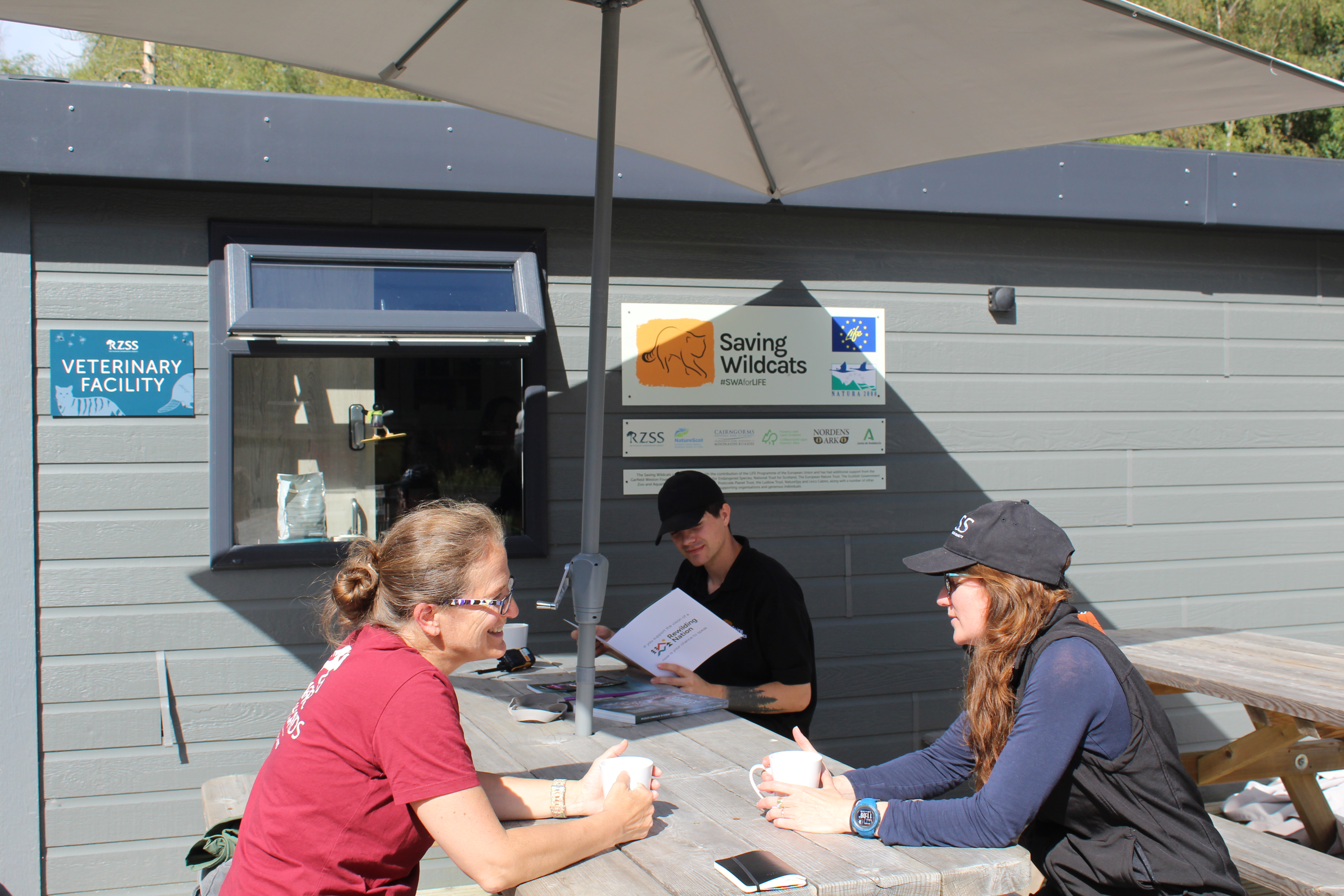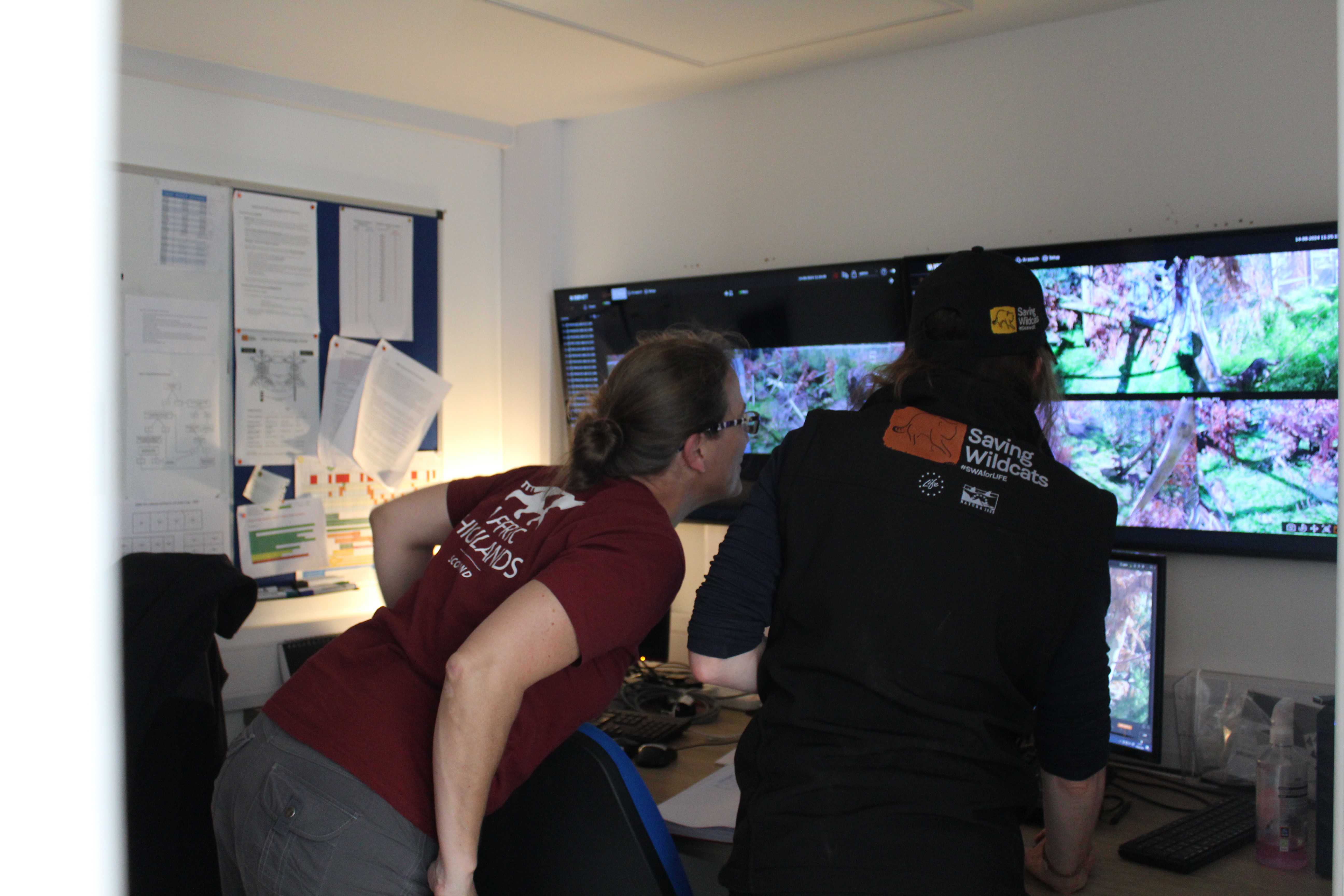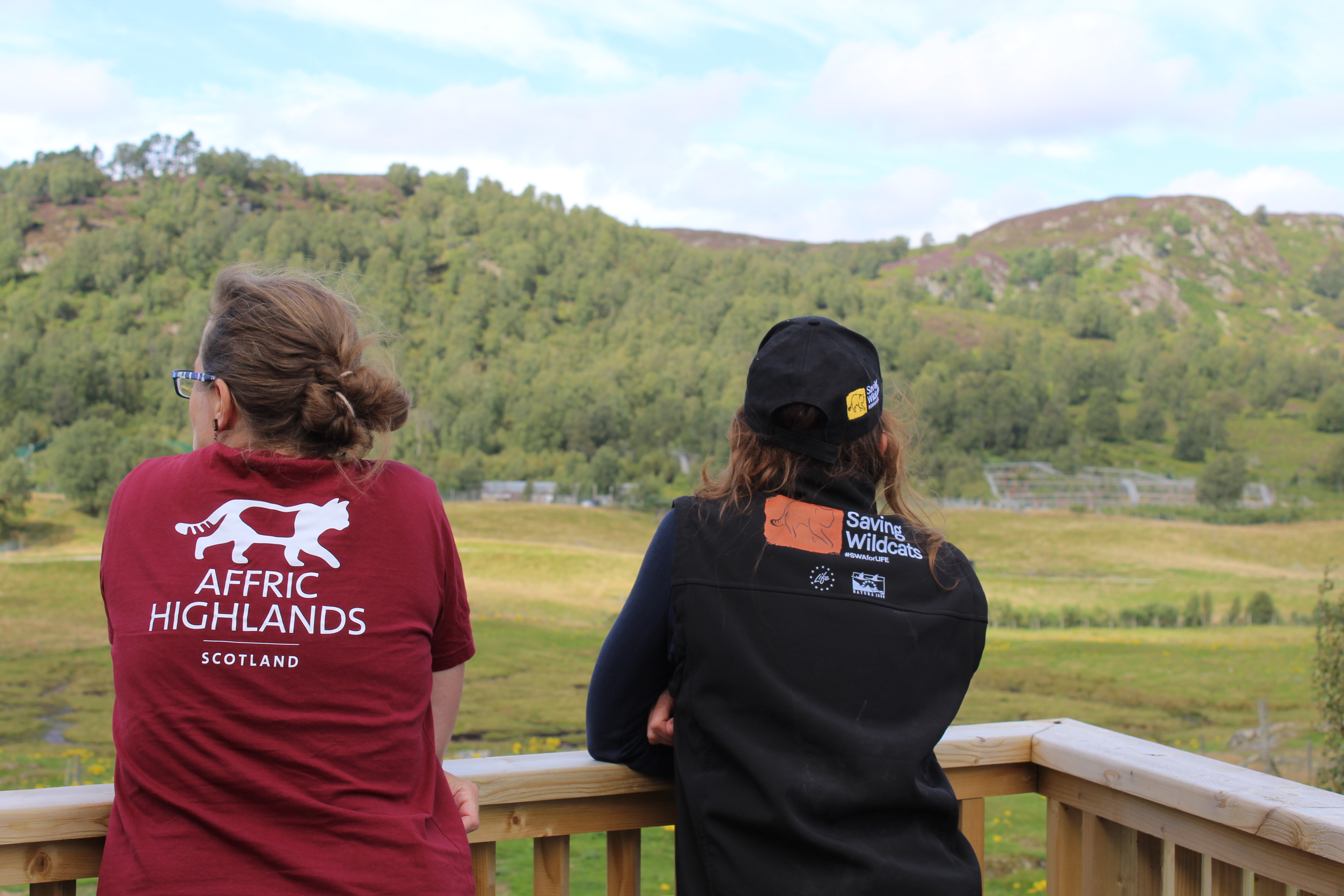Heads together on the bigger picture for nature recovery in the Highlands
A second year of wildcat releases has been funded by Rewilding Europe via their European Wildlife Comeback Fund, helping Saving Wildcats move yet another step closer to restoring wildcats in Scotland by covering the costs of GPS-radio collars and the construction of soft-release enclosures. And remarkably, less than 100 km away from the headquarters of Saving Wildcats at Highland Wildlife Park, there is another initiative that is supported by Rewilding Europe. Affric Highlands is a 30-year rewilding initiative bringing together communities, businesses and landowners to restore woodland, peatland and riverside habitats within an epic landscape situated in heart of the Scottish Highlands. The initiative faces many of the same challenges as Saving Wildcats, so the two project leads – Dr Helen Senn (Saving Wildcats) and Stephanie Kiel (Affric Highlands) – decided to get together to share their knowledge and experiences with each other. Here’s what they had to say:

HS: “A key thing for me that comes out from the restoration of species like the wildcat is the need for large areas of high-quality interconnected habitat. That’s clearly an ambition for Affric Highlands. What are your long-term goals for the initiative?”
SK: “We would like to see various habitats naturally regenerating across the region. This mosaic would include a nice, natural mixture of grasslands, heathlands, pinewoods, riparian woodlands and scattered birch woodlands – a natural balance of all these different habitats. Ideally, these areas will be naturally re-emerging and expanding with minimal human intervention.”
HS: “A high quality mosaic of woodland heath habitat is, of course, exactly what the wildcat needs. Interestingly, this type of habitat is also required for a range of rare invertebrates found here in the Cairngorms such as the pine hoverfly and dark bordered beauty moth and, historically, this mosaic structure would have been fostered by the presence of beavers. We have a massive challenge of shifting baseline syndrome in the UK – people don’t realise what our natural environment once looked like as they’ve experienced a gradual change in the accepted norms of their surroundings. There’s been a lot of recent change in our understanding in the UK as to what makes for a good habitat, so what would you be looking out for?”
SK: “There’s plenty of great examples in Glen Affric, Glen Shiel and Glen Urquhart where you see clusters of white hawthorn flowers in spring and lots of aspen. You can see pockets of ‘good habitat’ everywhere: woodland crawling up the hills out to Skye, for example. But if you zoom out and look at it on a much larger scale, it’s just a drop of water on a hot stone rather than a real landscape-scale shift.”
HS: “Here in Strathspey the wildcats are telling us where the good habitat is, what it looks like and what connectivity actually means, and my hope is that we can inspire land managers to make more of it, so that there is less ‘hot stone’! From my perspective, species conservation projects feel like they come under a lot of criticism - too sexy, too expensive in comparison to landscape restoration - but at the end of the day it’s the mobile species like wildcats that are the acid test for ecosystem quality and connectedness, so we need both.”

SK: “It’s particularly challenging here in an island nation like the UK because nothing can wander back into the landscape naturally. So, every species reintroduction requires an active party driving the process.”
HS: “Yes! People are always telling us ‘Your wildcats are doing this!’, and my response is that ‘It’s OUR wildcats - Scotland’s wildcats - that are doing that.’”
SK: “The challenge is how do people come to feel that it’s their nature, that it belongs them?”
HS: “Totally agree. I remember asking the lead of the scimitar-horned oryx reintroduction project in Chad (that RZSS have been involved with in an advisory capacity for years) - why are you trying to drive this project now? You know there are a heck of a lot of challenges in a country that is 289 on the Human Development Index, that we don’t have to face here in Scotland. He said it was because the scimitar-horned oryx went extinct in the 1980s and 1990s, and if we leave it too long the species will fade from human memory. I was really struck by that, and it sticks with me for wildcats. People often ask me why we don’t fix all the problems (i.e. persecution, interbreeding with feral domestic cats, habitat loss) first and then put them back. But if we wait too long, people will have forgotten how to live alongside them. When we speak to people, they have a memory of seeing a wildcat - but when we ask them about when this was, we find that it’s often at least 30 years ago.”
SK “Yes absolutely, it’s the same for us. We have landowners who used to see wildcats everywhere and now they are gone. If they die out, what are young people going to say?”
HS: “For me, the issue of human memory has been a real motivator. I also feel that the wildcat needs to show us what’s good. The wildcat is the driver showing us all the problems that we know we need to fix. We also spoke earlier about how the data we gather from monitoring wildcats can be a powerful catalyst in helping us to engage with stakeholders. For example, we have help from lots of land managers who regularly see wildcats during their work because they are out on the ground day after day. They have a perspective on the landscape that we don’t, but being able to share collaring and camera trap data together is a point of common reference and leads to more open dialogue - ultimately everyone seeing what the animals are actually up to is fascinating.”
SK “Yes, I think this is where reintroductions and the species monitoring can be extremely useful as it brings together us and the land managers in a very different context – but with a shared interest! This is an opportunity for us to find common ground and develop relationships with them. And that is what we all need to do: work together with mutual respect and find a common perspective and vision for the land we all live in.”
Affric Highlands is the UK’s largest rewilding landscape, led by Trees for Life and Rewilding Europe. Learn more here.
Saving Wildcats loves hosting stakeholders at the centre and if your organisation would benefit from a knowledge exchange visit, please do get in touch!


